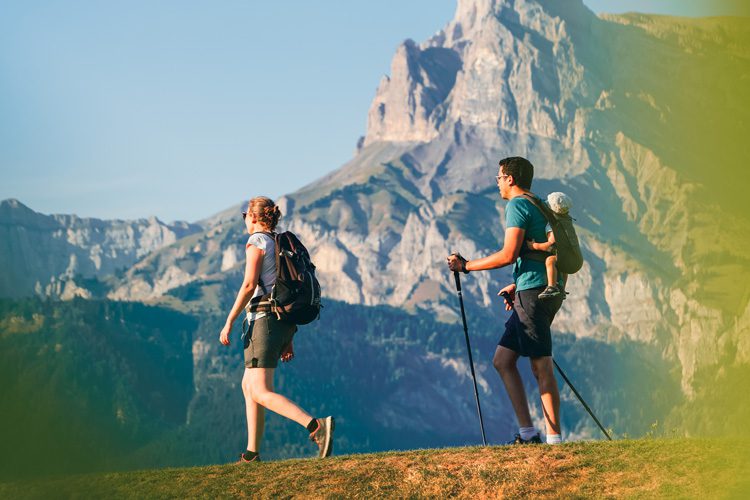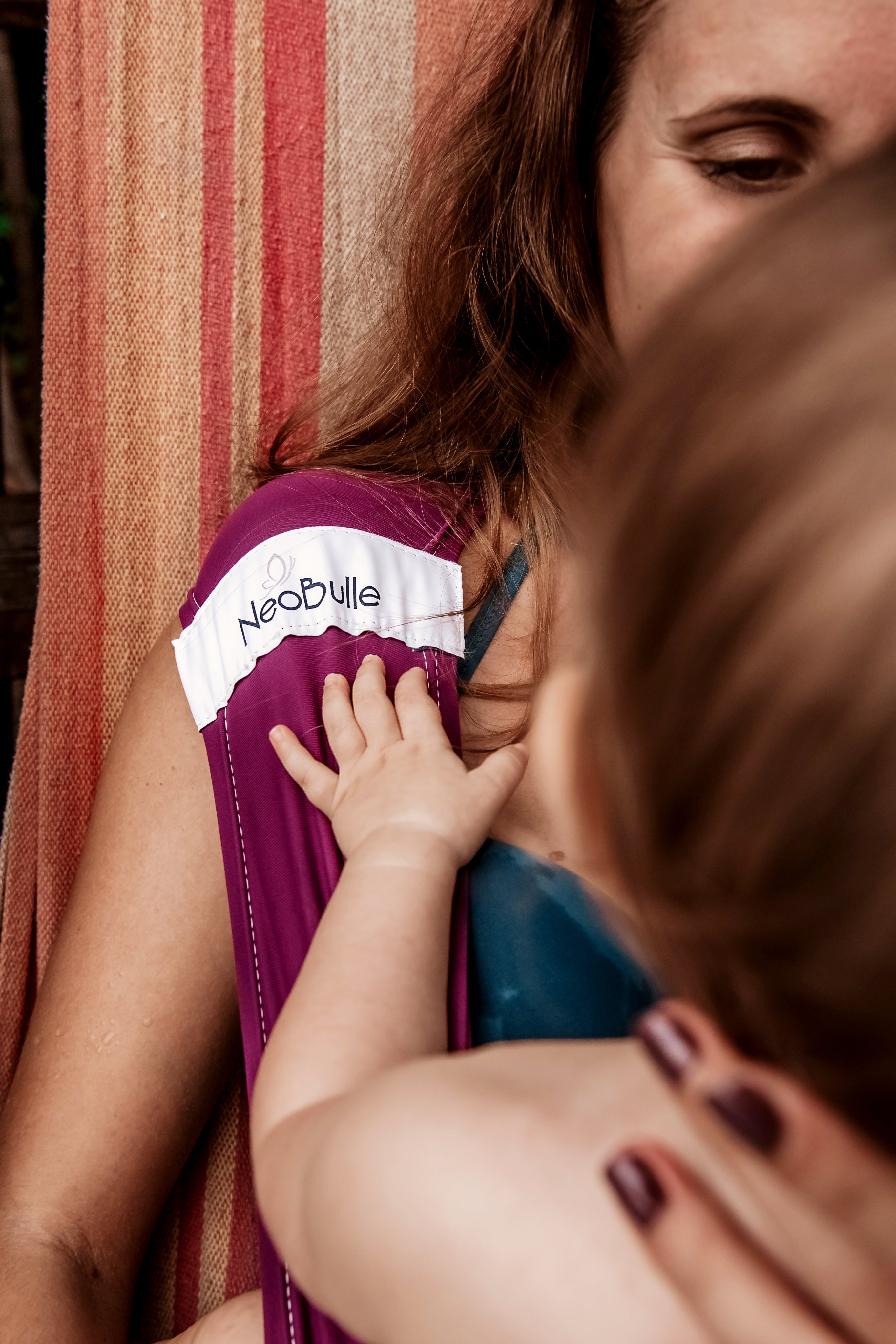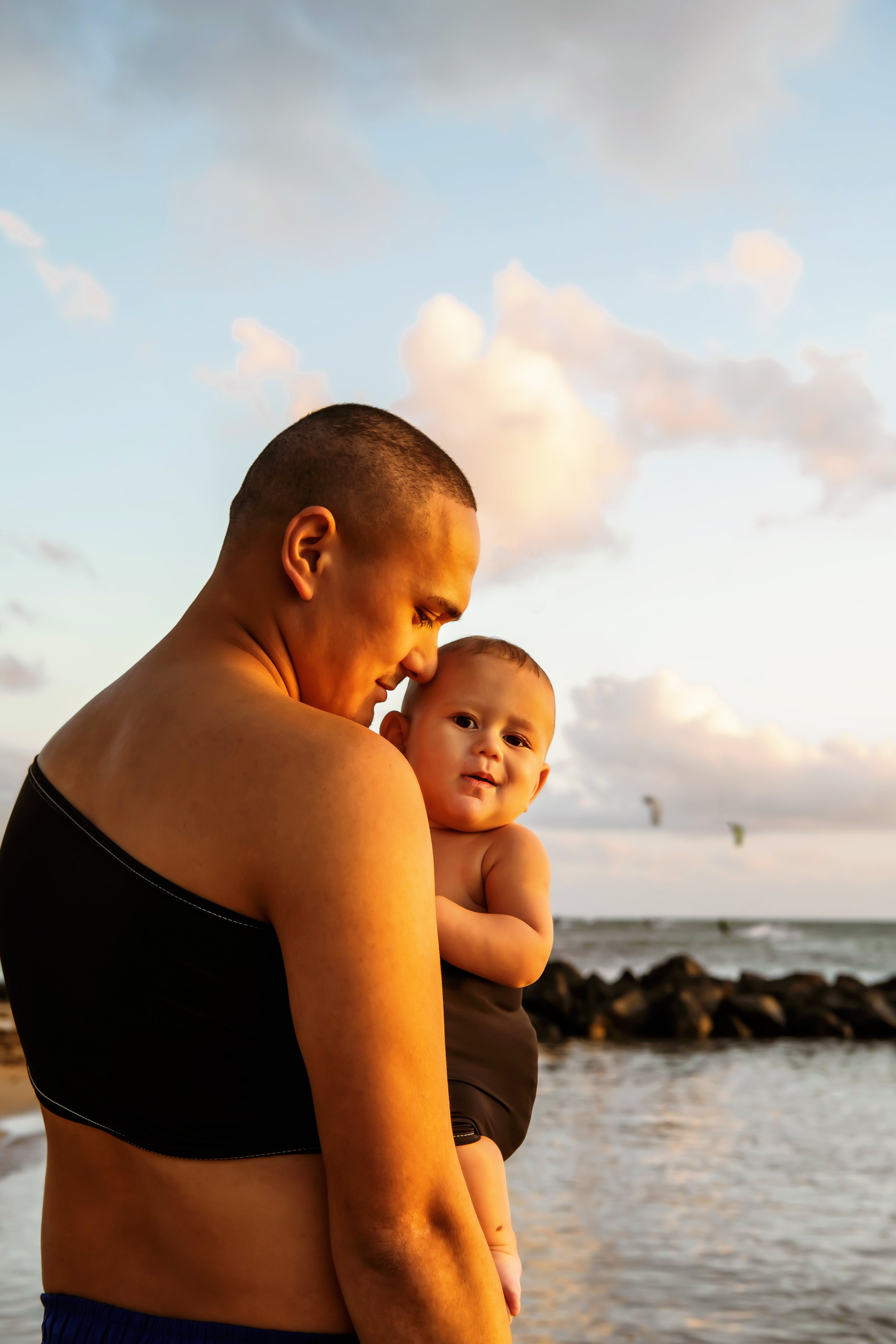
Hiking with baby
The nice days are coming, and with them the prospect of beautiful walks with your baby. It goes without saying that since a stroller is not particularly suitable for scrambling in the middle of the forest (some have tried but did not repeat), carrying your baby is highly recommended to make the experience enjoyable! So yes to carrying, but how, with what, are there any specific recommendations? Let us serve as your guide and let's go on an adventure together. 1st step: safety As with any respectable adventure, it is good practice for the guide to detail the safety rules to incorporate so that the hike takes place under the best possible conditions. Good condition equipment: this seems obvious but it’s always good to point out! Besides the risk of injury from faulty equipment, no one wants to end up carrying their baby in their arms for 5 km during a hike. A well-chosen schedule: in hot weather, prefer the times when it’s coolest, for example in the morning. Coincidentally, the child who acts as your new alarm clock is naturally programmed to wake up very (too) early and allows you to enjoy beautiful sunrises. Generally speaking, avoid routes in direct sunlight at 2 pm, even with good protection, the risk of heatstroke for your baby remains significant. An adjusted itinerary: for the ascent of Mont Blanc, baby must unfortunately grow a bit! More seriously, very long trips can sometimes become boring for children who may become less cooperative after a while. Opt for short enough circuits, which can be done in half a day, for example, allowing you to take your time to enjoy and make all necessary breaks. The route should also be practicable; overly steep or rugged terrains increase the risk of falls and are less suitable for carrying. Regular breaks: speaking of breaks, we invite you to take small pauses regularly to hydrate your baby, check that everything is OK for him, etc. Appropriate clothing: hat and sunglasses are essential! And a good layer of sunscreen as well. Favor light and comfortable clothing, and still bring a small jacket in your bag in case you pass through a slightly cooler forest. Back carrying: last but not least, it is highly recommended to avoid front carrying when the terrain is uneven. Indeed, the risk of falling is increased, especially since a baby affects your balance and obstructs your field of vision, preventing you from clearly seeing the stones and roots to step over. It goes without saying that these recommendations are only supplementary to the general safety rules already mentioned, especially regarding clear respiratory pathways. 2nd step: the baby carrier With safety ensured, we can now focus on choosing the actual carrying system. We have already mentioned it in another article (link to the 10 mistakes), the baby carrier must adapt to your needs and not the other way around, and it is essential here that you feel comfortable with your equipment so that the hike does not turn into a nightmare. When talking about hikes with children, one immediately visualizes large baby carriers with frames and lots of pockets. In reality, these carriers are not very relevant to use, and for several reasons: They are not suitable for the youngest children who cannot stand well They rarely allow the child to be comfortably seated (generally non-physiological, either the legs hang down or the child is sitting but without anything to contain him when he falls asleep) They are abominably uncomfortable: when carrying a hiking backpack, we make sure to place the heaviest elements at the bottom of the bag and as close to your back as possible. Here, you place 2 water packs at the top of the bag, flailing around and far from you! Options sold with sun-shade types are rendered obsolete by good practices, which involve avoiding being in direct sunlight and using a hat and sunglasses. Since this solution is ruled out, the final choice will actually depend on a simple question: do you have a child who walks? Non-walking child: In this case, your baby will be carried throughout the hike. Comfort is therefore paramount! You can use the equipment you are used to carrying with and feel most comfortable with on a daily basis: a sling or mei-tai, for example, can be perfectly suitable. Once installed, you will hardly touch it again. Walking child: This scenario involves the legendary cooperation of the toddler. Like Schrödinger's cat, which is both alive and dead in its box, Schrödinger’s toddler is both too tired to walk but too determined to be carried. Besides wanting to go right when you want to go left, he walks 100 meters, collapses from exhaustion demanding to be carried, then 100 meters further, marvels at a butterfly and wants to walk again, only to collapse 100 meters later and demand to be carried, then pick up a dead leaf 100 meters further and walk again… Immediately put away this carrying sling with which you might quickly end up tying it to a tree, and grab a preformed baby carrier ! The latter remains clipped to your waist, and your toddler will be free to climb up and down as they wish without requiring too much manipulation on your part. Well secured against you, the carrying times will remain pleasant for both him and you. 3rd step: additional equipment You have the baby, the baby carrier, drinks, hat, sunglasses, and sunscreen, you're ready to go. We suggest you pack in your snack bag for your little one: cookies for an older child, a pre-filled bottle for a younger non-buttered, fresh air makes them hungry and they might feel hungry sooner than usual. You can also pack a small first aid kit with bandages, disinfectant, and an insect-repellent stick Our excursion is over, you now have all the basics to go hiking peacefully with your children! Now, just enjoy these beautiful moments shared with family.

10 Mistakes to Avoid When Buying a Baby Carrier
Are you looking to invest in a baby carrier but don't know how to choose? From price to online reviews, the number of carrying positions, and recommendations from friends, this article is here to help you sort through the questions you need to ask yourself before purchasing. 1 – Respect for physiology Let's start with the basics: respecting physiology is one of the criteria to keep at the top of the list! It impacts both your comfort and that of your baby . The carrying system must be flexible to respect the natural curve of the baby's back , allow him to be grouped with his knees higher than his hips, and promote body-to-body contact and proximity . Beware of ambivalent mentions of the "ergonomic" type, which are not really in line with true physiology (often slightly wider crotch, but always rigid backrest for example) 2 – Security Another important point: the baby carrier must comply with safety regulations . The main points to check are: Compliance with current standards which guarantee safe manufacturing, strong seams, etc. Textile standards guaranteeing the absence of toxic products in materials (Oekotex for example) The baby must be able to be carried upright with clear airways (no lying position, no material behind the head) 3 – Facing the world The forward-facing position is not recommended in the field of physiological babywearing. Indeed, it is a posture in which you cannot really allow your baby to sit in a squat position without ending up parallel , squashed, or arched because of your chest behind his back. The forward-facing position offers far too many stimuli that your little one cannot handle. And above all, it is a posture in which he is not one with you: he pulls you forward and obstructs your field of vision, thereby increasing the risk of falling with him. Brands offering forward-facing babywearing are responding to a public demand to open babies outwards to stimulate them, but at the expense of safety and respect for their physiology . This is a good way to assess the brand's overall ethics! 4 – The “Swiss army knife” baby carrier Being aware that buying a good baby carrier remains a significant budget, it is very logically tempting to invest in the model that will offer the most possibilities . We will then look for the baby carrier that allows carrying from birth to 4 years, in front and back, adapted to the mother of 1.50m but also to the father of 1.95m, which is practical and quick to install but comfortable, suitable for both everyday use and hiking, breathable in summer but warm in winter and which protects from the sun, wind and rain, and if it could also make coffee that would be perfect ! Consider a newborn, a one-year-old, and a four-year-old, and see the enormous disparities in their sizes, weights, motor development, and needs. No baby carrier can perfectly meet such different requirements! The same goes for uses , we could compare the baby carrier to a pair of shoes, we will not use the same pair depending on whether we want to go to the beach, just do a little shopping, or go hiking. It is therefore advisable to target the main need that we will have as well as the age of the baby to be carried, to look for a model that will adapt precisely to these criteria and not to be caught up in the illusion of the baby carrier that does everything (and which in fact does not exist). 5 – Too much simplicity Conversely, a carrying system sold as too simple should always be questionable. What has been cut to simplify its use ? Can the system still be properly adjusted to the size of the wearer and their baby? One-size-fits-all systems without any adjustment will never provide you with a satisfactory carrying experience ; they will always be too big or too small , leading to questions about the safety of their use. 6 – Anticipation of needs As we saw in point number 4, it is important to target our desires and constraints to choose the model that will be the most suitable. Be careful, however, not to anticipate too much! No one can know how it will wear 6 months or 1 year later and the risk is to make a choice that will not suit the needs of the present moment, nor later , and from which you will not benefit. Choose according to the needs you know, in order to fully enjoy these sweet moments with your little one and make the experience as pleasant and helpful on a daily basis as possible. 7 – Advice from friends and other internet comments Your friend whose baby is a few months older than yours assured you, " the Model X is gen-ial " and she swears by it! But on the internet, the Model Y also seems to be well-rated and has lots of good reviews. Who to believe? No one. Choosing a baby carrier is extremely subjective . It depends on the sensations you like and your body shape (preformed carriers have different cuts depending on the brand, for example, like clothes ). The Model X may have suited your girlfriend perfectly, while you will be terribly uncomfortable in it. Online reviews are also biased because they are rated by people who are mostly just as new to the subject as you are and will not have been able to try other systems to have points of comparison. Would you be as satisfied with the comfort of your 2CV if you had also tested a Mercedes before choosing? 8 – The price Quite counterintuitively, price is not necessarily a good selection criterion . While a low cost should indeed alert you to the overall quality and place of manufacture of the product, a high cost does not guarantee that the model is comfortable, physiological and safe! 9 – The soft textile Your baby seems tiny and fragile, and you dream of wrapping him in a cocoon of softness. Your choice might then fall on a very soft sling, so pleasant to the touch. But your cute, tiny baby will soon grow up. He's expected to gain about 1 kg per month and quickly start to kick more vigorously! A material barely thicker than a bodysuit or pajamas will quickly become difficult to handle and unusable in good conditions (we are looking for a baby carrier and not an item of clothing). A firmer fabric poses no problem on a newborn and will provide more lasting comfort. 10 – The baby carrier that stays in the closet Last but not least: the best baby carrier is always the one you REALLY see yourself carrying your little one in! While the baby sling is often cited as the ideal system, if you're not comfortable with it staying at the bottom of the closet, the benefit will be very limited. As long as the system is age-appropriate and safe for your baby , the main thing is that you are comfortable with it and comfortable using it. In short, choosing a baby carrier is very subjective and personal. Take the time to assess your needs and constraints, and don't hesitate to contact a baby carrier instructor for more specific advice, to try out different models, and to learn how to use them! Comparison of Néobulle preformed baby carriers




